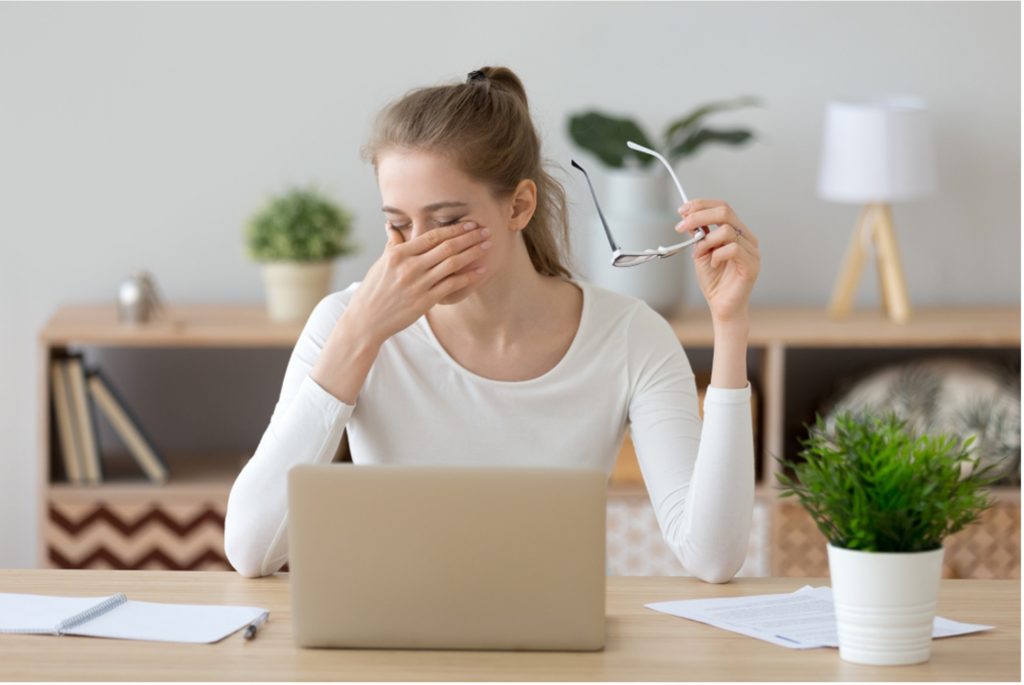Posted on: 30 November, 2021
Although we are grateful for the use of mobile and computer devices making our daily lives simpler and more connected, looking at these screens for long periods of time can actually have a negative impact on our eye health. You may not think about this often, since we have become programmed to use our screens for hours each day, whether this is for work or to stay connected with family and friends. They can in fact cause our eyes to strain, resulting in a number of concerns. Since we use our screens so often, it is important we take protecting our eyes seriously. Simple measures can be implemented into your daily life to help protect your eyes from the screens of mobile and computer devices. As we see a range of patients of various ages, including children, we are going to explore these measures in this latest article.

Computer Vision Syndrome or CVS is currently on the rise with case numbers increasing as our average screen time increases. CVS is caused by the prolonged use of any digital device with a screen. It can result in a number of symptoms including:
Computer Vision Syndrome is caused by prolonged screen use, that requires your eyes to work harder to focus when staring at a screen. When the muscles in your eyes have to strain to focus, they can soon become tired. Your blink rate may also decrease, since you are focusing so intently, that can cause your eyes to become dry and tired.
Fortunately, computer eye strain or CVS is not a permanent condition, in fact there are a number of ways you can reduce these symptoms and protect your eyes from your screens. For example:
If you are not familiar with the 20/20/20 rule, the name is simply a fun reminder to take a much-needed break from your screen during your long workdays. This is a particularly good rule to follow when working in an office environment and should be encouraged by companies and managers.
If you are spending longer than 20 minutes looking at your screen, take some time to focus on something 20 feet away from your screen for at least 20 seconds. This is enough time for your eyes to adjust, reducing your risk of eye strain and common symptoms like headaches and dry eye.
The glare and brightness of your screen can make a real difference to the amount of strain your eyes are under. Where possible, try to reduce the glare either by adjusting your settings or investing in an anti-glare screen. If you already wear glasses, opt for an anti-reflective coating on your lens.
Visiting your optometrist regularly ensures your eyes are still healthy and allows for signs of common eye conditions to be detected early. You should be making annual visits, particularly if you already wear glasses or lenses. At R.Woodfall we treat adults and children, so if you are concerned about your eye health or need to book in for a routine eye test, get in touch today.
Copyright 2024 R. Woodfall. All rights reserved.